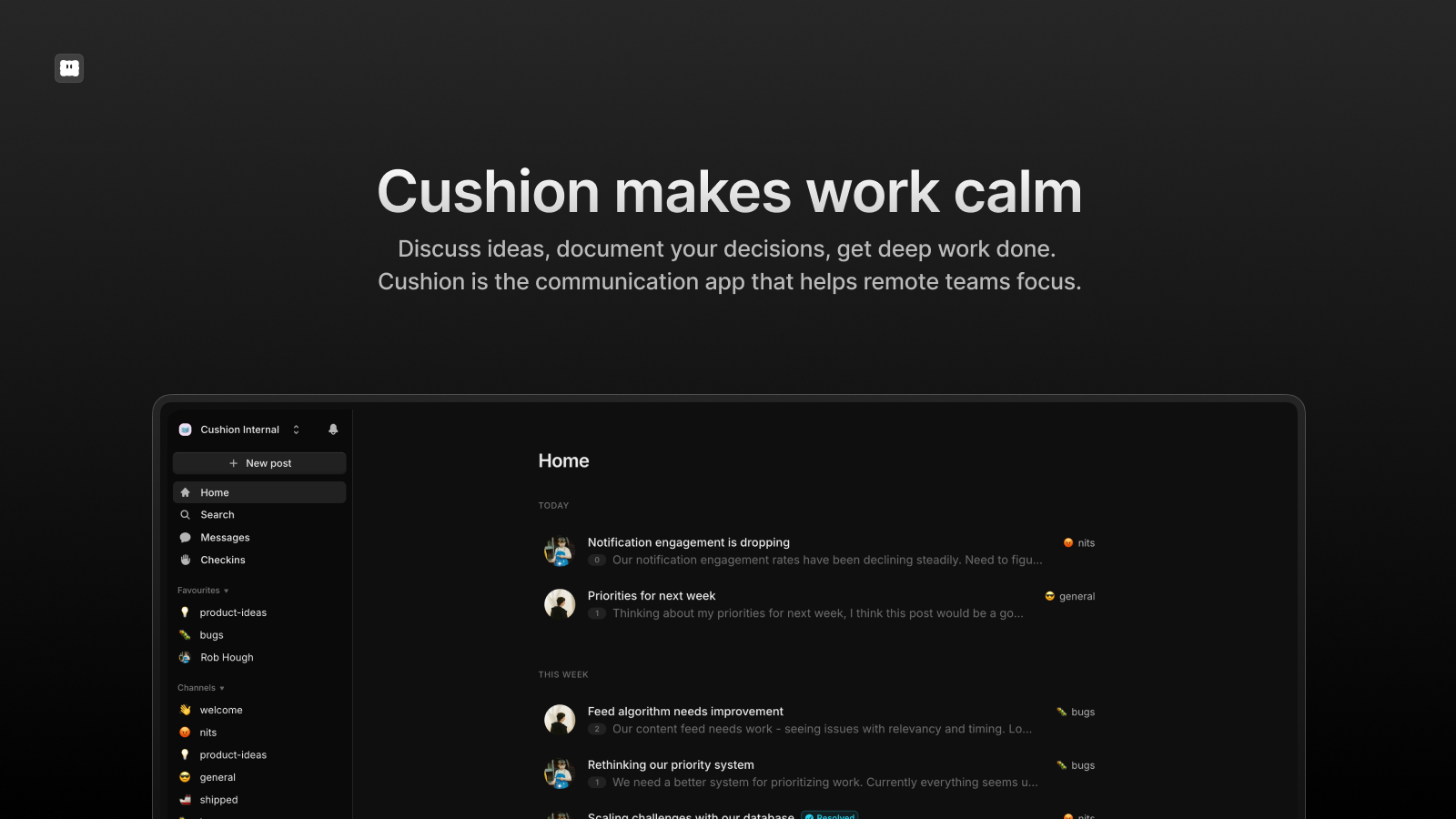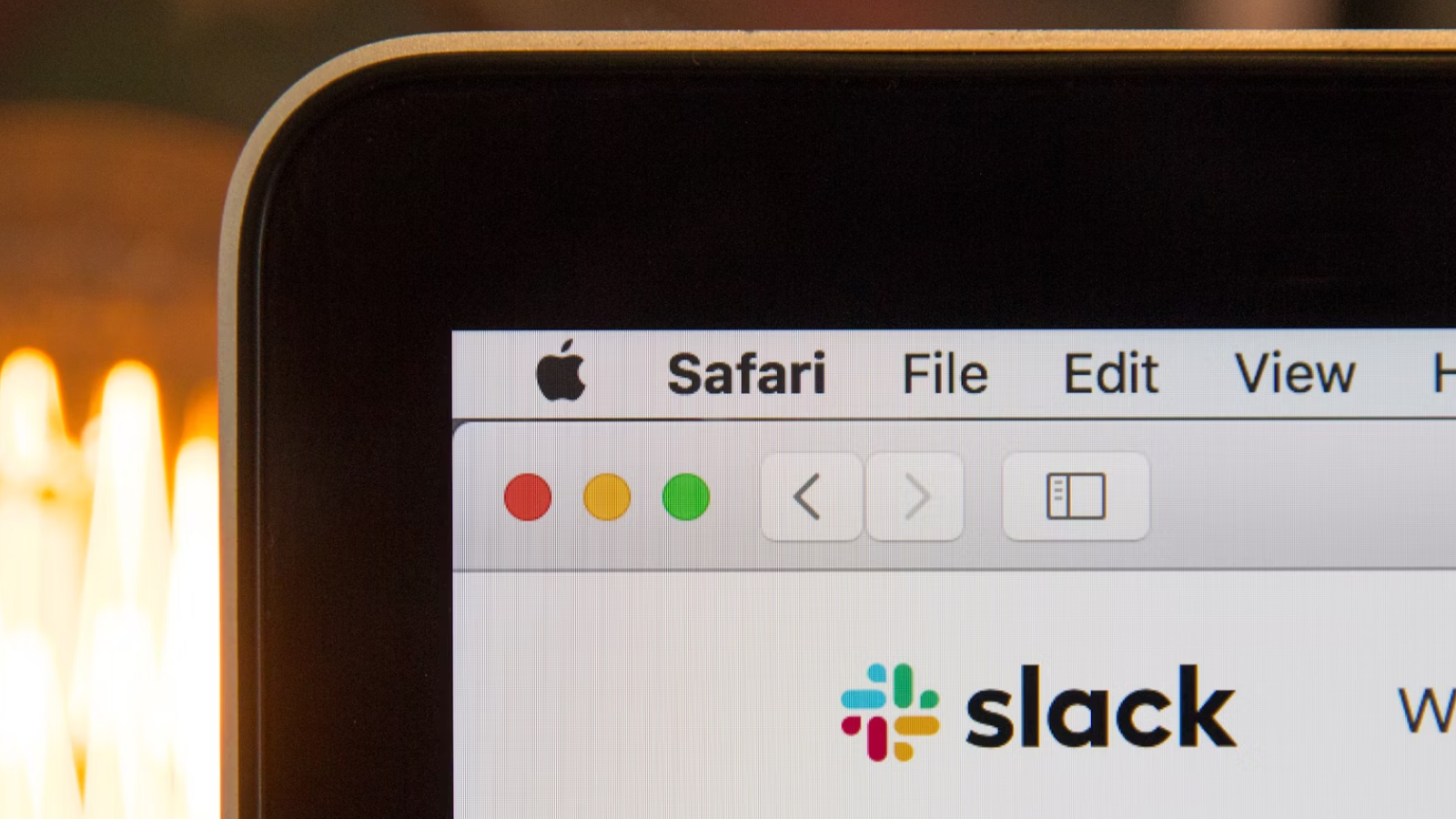Slack is the obvious choice for most companies. With over 47 million active users, along with Teams it dominates the workplace communication market.
But lots of companies find Slack doesn’t work for their team. They know this because important conversations get buried, notifications never stop, and finding decisions from last week feels impossible.
The problem is that Slack was built for instant messaging, not proper teamwork. Most teams need something different entirely.
Why teams are moving away from Slack
Slack creates three big problems for remote teams:
Everything feels urgent. A casual chat about lunch gets the same attention as critical project feedback. Your brain can’t tell the difference.
Important stuff gets lost. Finding that key decision from three weeks ago means scrolling through hundreds of messages and random GIFs.
Work gets fragmented. You’re bouncing between Slack, email, Google Docs, and five other apps just to understand what’s happening with one project.
Sound familiar? You’re not alone. Here are five alternatives that solve these problems properly.
The 5 best Slack alternatives
1 Cushion

Best for: Teams who are distributed/remote or need to focus on getting work done. Willing to pay a little more for quality.
Cushion combines async work with real-time features. It favours asynchronous working but accommodates real-time workflows like chat and instant updates. Perfect for teams that focus on deep work or small teams in the trenches.
Key features:
- Post-based conversations that stay organised
- Sophisticated notification controls to stop interruptions
- Track decisions and gather feedback seamlessly
- Async “checkins” which replace status meetings, keeping everyone in the loop
- Built for deep work, not constant interruptions
- Channel linking for easy reference to past decisions
Pricing: $8/user/mo
The downside: Limit of post on free tier
2. Microsoft Teams
Best for: Companies already using Microsoft tools
Teams is the obvious choice if you’re already in the Microsoft ecosystem. It integrates properly with Office 365, handles up to 300 participants in video calls, and actually organises conversations around teams and projects instead of random channels.
Key features:
- Video calls that don’t constantly break (supports up to 300 people)
- File sharing that makes sense with Office apps
- Proper threading for important discussions
- AI features with Microsoft Copilot (extra $30/month)
Pricing: Free plan available, business plans from $4/user/month
The downside: Still feels like instant messaging at heart. You’ll have the same problems as with Slack.
3. Discord
Best for: Creative teams who love voice communication
Discord was built for gaming communities, but many work teams love it. The always-on voice channels mean quick conversations don’t need scheduling—just hop in when you need to chat.
Key features:
- Always-on voice channels for natural conversation
- Best audio quality available
- Screen sharing that actually works
- Free for unlimited users
- Server support for up to 250,000 members
Pricing: Free for basic features, Discord Nitro $2.99/month for extras
The downside: Poor UX. Looks unprofessional to some clients. Not great for formal communication.
4. Twist
Best for: Remote teams working across time zones
Twist was built by the makers of Todoist specifically for asynchronous work. Instead of real-time chat that demands immediate responses, everything is organised in threads by topic. It’s perfect for teams that want to think before they reply.
Key features:
- Thread-based conversations that stay organised
- No presence indicators—reduces pressure for instant replies
- Inbox model for managing communications
- Built for deep work, not constant interruptions
- Channel linking for easy reference to past decisions
Pricing: Free plan available, paid plans from $6/user/month
The downside: No real-time chat if you need it. Essentially in maintenance mode and rarely updated.
5. Rocket.Chat
Best for: Security-conscious teams who need control
Rocket.Chat offers both cloud and self-hosted options. If your team handles sensitive information, you can run it on your own servers with complete control over your data. It’s like Slack but with proper security.
Key features:
- Self-hosted or cloud deployment options
- End-to-end encryption
- Integration with development tools (GitHub, Jira, Trello)
- Federation support to communicate across platforms
- Extensive customisation and API access
- Omnichannel support for customer communication
Pricing: Open-source version free, cloud plans from $4/user/month
The downside: Requires technical setup for self-hosting. Poor UX.
Quick comparison table
Quick comparison table
| Tool | Best for | Monthly cost | Main benefit | Main drawback |
|---|---|---|---|---|
| Cushion | Small-teams who love deep work | Free-$8/user | Post-based, but still has chat | Limited free tier |
| Microsoft Teams | Microsoft shops | $4/user | Great Office integration | Still chat-focused |
| Discord | Voice-first teams | Free | Always-on voice channels | Unprofessional look |
| Twist | Async teams | Free-$6/user | Thread-based, no pressure | No real-time chat |
| Rocket.Chat | Security-focused | Free-$4/user | Self-hosted control | Technical complexity |
Which one should you choose?
The best alternative depends on what’s broken about Slack for your team:
If conversations get buried: Try Cushion or Twist. Both organise discussions properly so you can actually find things later.
If everything feels urgent: Try Twist or Cushion. They’re designed for thoughtful communication, not constant interruptions.
If you need better video calls: Try Discord or Microsoft Teams. Both handle calls much better than Slack.
If you want something familiar: Try Microsoft Teams. It works like Slack but integrates properly with tools you already use.
Making the switch
Don’t try to migrate everything at once. Pick one project or team to test the new tool first. See how it feels for a few weeks before rolling it out company-wide.
Most importantly, think about what type of work your team actually does. If you’re constantly putting out fires, maybe Slack’s instant messaging approach works fine. But if you’re building things that take weeks or months, you probably need something designed for project work instead.
The goal isn’t to find a perfect tool—it’s to find one that fits how your team actually works, not how Slack thinks you should work.
